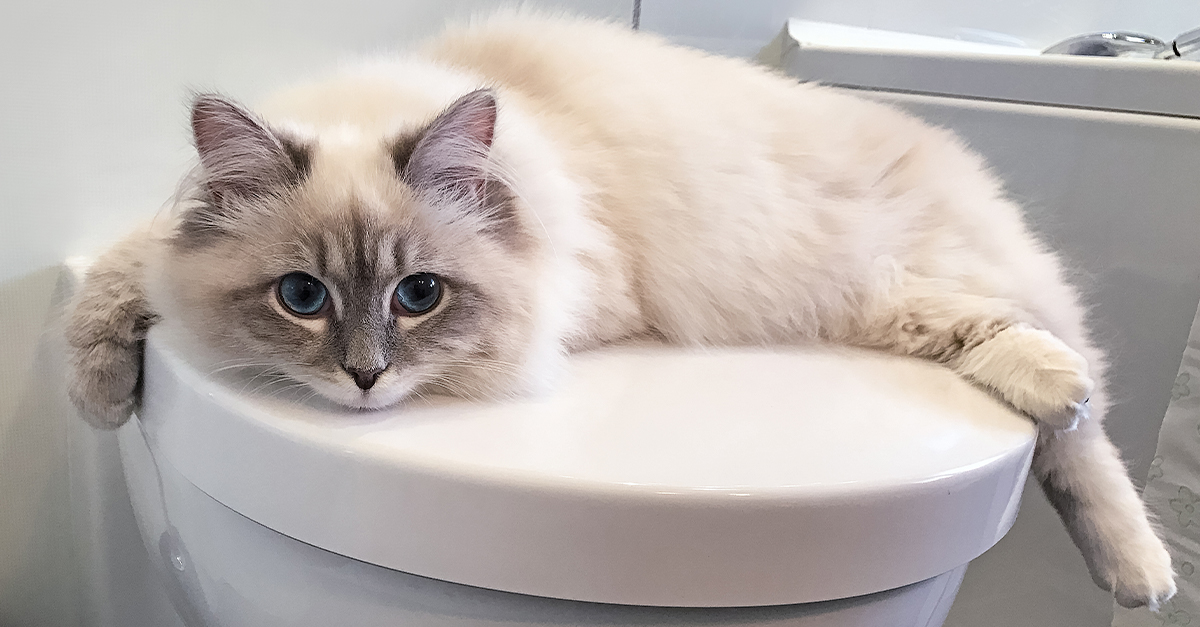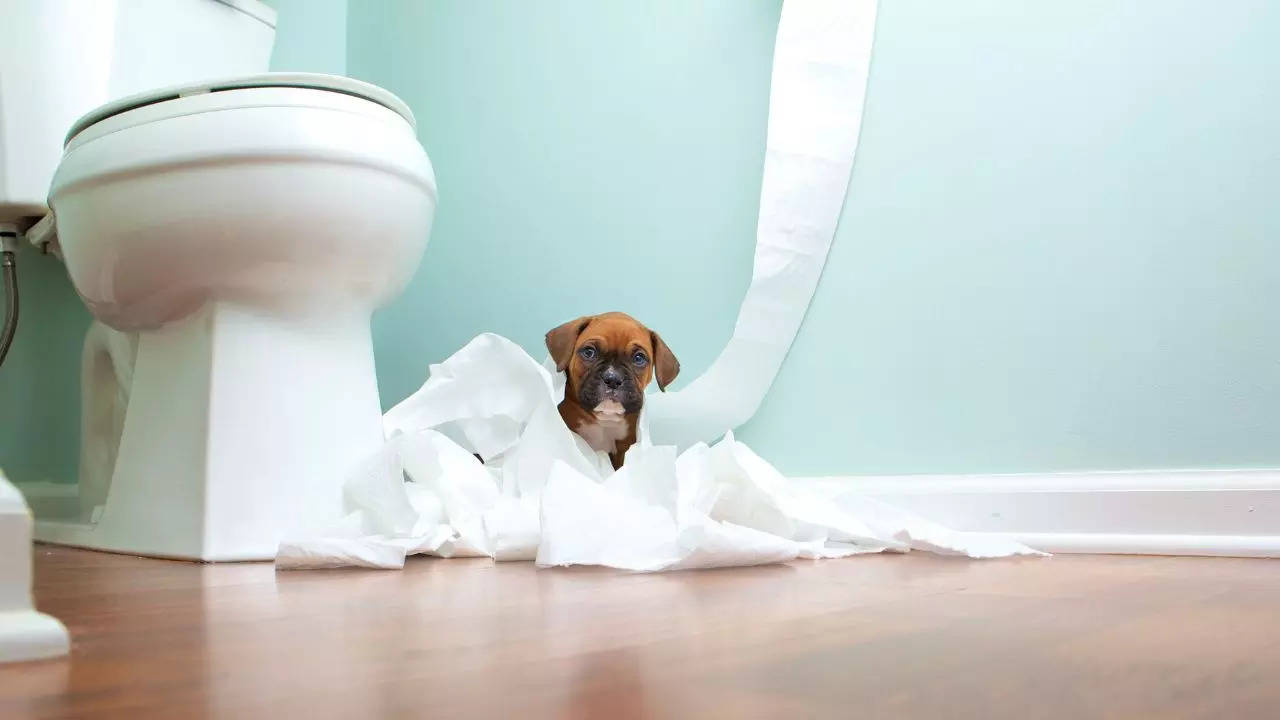What're your opinions concerning Don't Flush Your Pets Poo Down The Loo, Vet Warns?

When it comes to getting rid of waste, especially animal waste, lots of people usually resort to the practical alternative of flushing it down the bathroom. However, this seemingly very easy remedy can have severe repercussions for the environment and public health. In this short article, we'll discover why flushing pet waste down the toilet is a poor idea and supply different methods for correct disposal.
Intro
Appropriate waste disposal is important for preserving environmental sustainability and public health. While it might appear harmless to flush animal waste down the bathroom, it can result in numerous problems, both for the atmosphere and human wellness.
Threats of flushing animal waste
Ecological impact
Purging pet waste introduces unsafe germs and virus into waterways, which can negatively influence aquatic ecosystems. These virus can pollute water resources and injury aquatic life, interrupting delicate communities.
Public health problems
Pet waste consists of dangerous germs such as E. coli and Salmonella, which can posture serious health and wellness threats to humans. Flushing pet waste down the commode can infect water supplies, causing the spread of illness and infections.
Alternatives to flushing
Rather than flushing animal waste down the bathroom, there are a number of alternative disposal approaches that are much more environmentally friendly and sanitary.
Composting
Composting pet waste is a green way to deal with it. By composting, raw material is broken down right into nutrient-rich dirt, which can be made use of to fertilize gardens and plants.
Landfill disposal
Dealing with pet waste in a garbage dump is an additional option. While not as environmentally friendly as composting, it is a safer alternative to flushing, as it avoids the contamination of water resources.
Family pet garbage disposal systems
There are specialized pet dog waste disposal systems available that securely and hygienically deal with pet waste. These systems commonly utilize enzymes to break down waste and remove smells.
Actions to appropriate animal garbage disposal
To guarantee appropriate disposal of pet waste, follow these steps:
Scooping and getting waste
On a regular basis scoop and bag animal waste utilizing biodegradable bags. This avoids waste from contaminating the setting.
Utilizing marked waste containers
Dispose of bagged pet waste in designated waste containers, such as compost bins or garbage dump containers. Avoid flushing it down the toilet in any way expenses.
Cleaning litter boxes and family pet areas consistently
Regularly tidy can and pet locations to prevent the build-up of waste and germs. Use pet-safe cleansing items to preserve hygiene.
Advantages of proper disposal approaches
Embracing appropriate disposal methods for animal waste uses several benefits:
Minimized environmental pollution
Correct disposal methods decrease the threat of environmental pollution, securing waterways and ecological communities from contamination
Lessened risk of water contamination.
By staying clear of flushing animal waste down the bathroom, the risk of water contamination is considerably minimized, securing public health.
Improved hygiene and hygiene
Correct disposal techniques promote much better hygiene and hygiene, developing a much safer setting for both get more info human beings and animals.
Verdict
Finally, flushing pet waste down the toilet is unsafe to the setting and public health. By embracing alternate disposal approaches and adhering to proper waste monitoring techniques, we can minimize the negative effect of pet waste and contribute to a cleaner, healthier world.
Why You Should Never Flush Animal Waste Down the Toilet
As a pet and property owner, cleaning up after your furry friends is important to ensure your property is clean and disinfected. However, when disposing of animal waste, many opt to flush it down the toilet. After all, it seems like the most convenient option, right? Unfortunately, this common practice can actually have harmful effects on your plumbing system and the environment.
What Comprises Animal Waste?
Animal waste refers to bodily excretions such as feces and urine from pets such as cats, dogs, and rabbits. These excretions contain bacteria, pathogens, viruses, and parasites that can harm humans and the environment. Some types of animal waste, such as feces from dogs and cats fed on processed foods, may contain harmful bacteria like E.coli, salmonella, and campylobacter. Flushing this type of waste down the toilet could pollute waterways and destroy the ecosystem.
Environmental and Physical Dangers of Flushing Pet Waste
In the environment, flushing waste can contaminate waterways, killing aquatic life and harming the ecosystem. The waste that might be considered flushing down the toilet could also adversely impact your plumbing and sewage systems in the following ways.
End Up in Sewage Treatment Plants
Flushing pet waste down the toilet can have a detrimental impact on sewage treatment plants and the overall water quality. Pet waste contains harmful bacteria and pathogens that, if not properly treated, can contaminate water sources and pose a risk to aquatic life and human health. Sewage treatment plants are designed to handle human waste and other biodegradable materials, but they are not equipped to effectively treat the bacteria and pathogens present in pet waste.
Clog Pipes
Density: Animal waste is often dense and easily gets stuck in pipes. Unlike human waste, which is designed to be flushed away smoothly, pet waste contains elements like grass, dirt, raw hide, hair, and other materials that can create blockages in the plumbing system. Potential damage: Flushing pet waste, even in small amounts over time, can lead to costly repairs. It can cause cracked pipes and other plumbing issues, resulting in the need for professional intervention. Public and private waste management systems: Flushed pet waste can also cause problems in public and private waste management systems. It can overload septic tanks and other sewage treatment systems, leading to backups. Leading to Untreated Sewage Overflows
Flushing excessive amounts of pet waste can overwhelm the sewer system's capacity to handle the additional waste load. This can cause backups and overflows, leading to untreated sewage entering waterways.
Additionally, pet waste, particularly when combined with other non-biodegradable items like wipes or litter, can create sewer pipe blockages. These blockages prevent the proper flow of wastewater and can cause sewage to back up and overflow.
Flushing Pet Waste Could Affect Human Health
In addition to environmental hazards, flushing pet waste down the toilet could be detrimental to human health. The bacteria found in animal excrement exposed to sewage might cause infectious diseases. For that reason, people whose immune systems have been weakened by particular diseases, medical treatments, or age can be in danger of disease from even the smallest bacterial exposure in contaminated water.
Alternative Ways to Responsibly Disposing of Pet Waste
The most secure and sustainable way of disposing of pet waste is by composting it. Cat litter can be useful fertilizer for your garden if you compost it safely and appropriately. However, it is essential to do this correctly to prevent exposure to the dangerous parasites that the waste might have. It is best to research before composting your pet waste, as certain toxins can persist even after the composting process is finished.
Another safe way to dispose of pet waste is by bagging and throwing it in the trash bin. Here, it is crucial to choose the appropriate bag for disposal, such as biodegradable bags that quickly decompose, reducing the carbon footprint of landfills.

I hope you liked our piece on Should you flush animal waste down the toilet. Thanks so much for spending some time to read our post. I beg you take the time to share this entry if you appreciated it. I enjoy reading our article about 10 Things You Should Never Flush Down The Toilet.
Call